During the turn of this century, Jon Persson, a boat designer based in Westbrook, Connecticut, wanted to create an open-water rowing craft that would be not only economical and simple to build but also accessible to someone new to the sport and yet still please those who were more experienced.Persson began the design development with inspiration from the Francis Herreshoff–designed and John Gardner–drawn pulling boat the Green Machine, a beautiful lapstrake affair with dozens of steam-bent frames, and along the way incorporated aspects of the Chamberlain Gunning Dory. After several half models and prototypes, Persson finalized the design as the Atlantic 17 Dory—a symmetrical, double-ended, 17′-long boat that has a 48″ beam with the speed of the Green Machine, the seakeeping qualities of the Gunning Dory, and a very simple plywood-on-frame construction process.I recently ordered Jon’s plans. They include profile and plan drawings, full-sized frame and stem patterns, and four pages of written instructions, which include a technique that ensures fair planking. The hull has two strakes, a flat dory-like bottom, and a small skeg. Construction is straightforward and detailed in the plans, and is within easy reach of an amateur who has some previous woodworking and epoxy skills.
Join The Conversation
We welcome your comments about this article. To include a photo with your remarks, click Choose File below the Comment box.


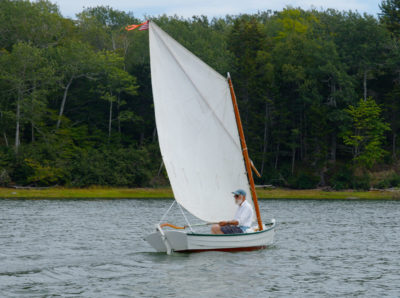
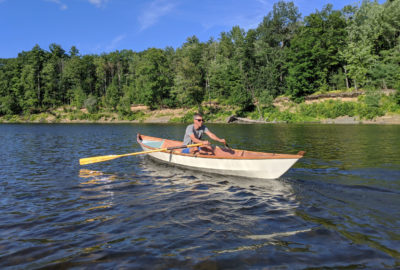

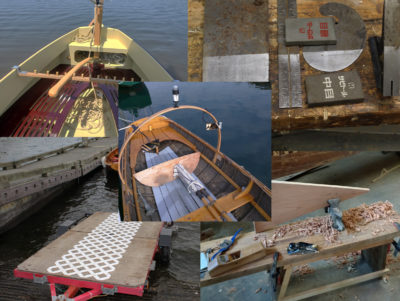
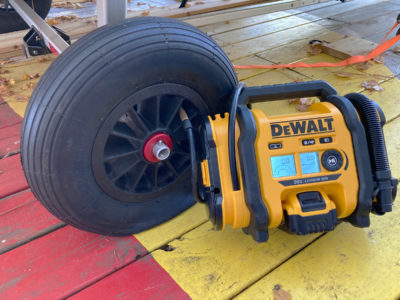
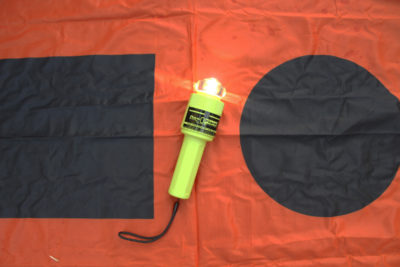


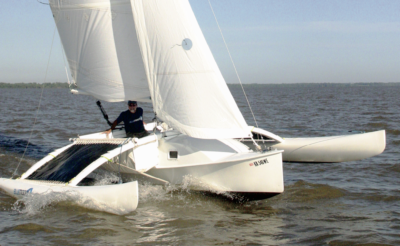
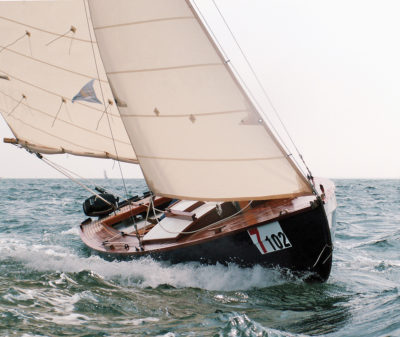
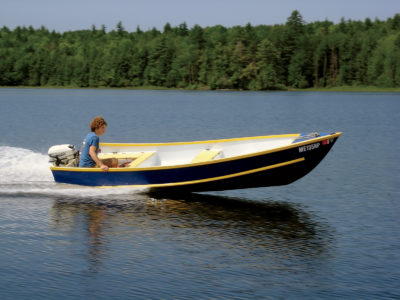
Great looking and seaworthy craft!
What a very good-looking little boat! Just for the looks I would have made the top of
buoyancy tanks parallel to the gunwale.
In a paraphrase to Herreshoff I would say: “Simplicity and small boats are a guarantee
of happiness.”
Jelle de Waard, builder of a 17′ Oughtred Ness boat 20 years ago
the Netherlands
Very nicely sorted out. I like the adjustability to fit lots of folks, usually a problem in these little boats. Look forward to giving it a pull.
Maybe because I’m looking kayaking the Maine Island Trail, I ponder this boat being set for only one rower with large watertight gear lockers fore & aft as a camp cruiser. An alternative, at more weight & complexity (and likely beyond my skill to build), would be fitted lockers that can be removed when not cruising as opposed to multiple dry bags.
Yes, John! I cruise extensively along the MIT in my sail & oar boats and I built the A17 with the idea of using her along the trail as well.
I think she would make a very fine MIT boat. Her flat bottom is amenable to dragging across mud flats and the light weight helps when pulling her up above the tideline. The relatively dry ride would be appreciated as well. I would definitely “pick my weather” to get around some of the heads or big crossings, as she is still a lighter boat. Your bigger tanks idea is a good one. My small tanks keep her gunwales just barely above the water when she is swamped and I can shake her out canoe-style, but more flotation would be something I would consider for heavier cruising. Her attribute is her light weight, so if you go this route, try to use 4mm or 6mm okoume ply and western red cedar for interior framing. By using small ply gussets at the joints of the timber you can increase strength of the structure and keep it minimalist.
There are so many great rowboats that have been featured in this publication that I would use to explore the trail. Every one has different benefits for the discerning cruiser, but the Atlantic 17 is definitely on the list.
Thanks!
I would love to have one! If anybody would care to trade…I have a Stonington pulling boat (fiberglass, sorry); I would trade. She has a sliding seat, oar outriggers, and I get yelled at in the harbor for going too fast.
Hi,
Fantastic job on this great design! I have the plans and have been trying to determine how to cut the frames accurately!?? How do you do that ? Any help is appreciated!
Thanks,
Jerry
Hi Jerry,
Take your time and be careful! As the boat is symmetrical, it is important to get all the frames matched to each other.
There are a few ways to go about this, I’ll describe the dependable take-your-time way, and then I’ll briefly describe how I did it in my quick-and-dirty style.
I’m assuming you have laid out the full-size patterns on the plywood sheet and traced them out. Placing small trim nails at the corners through the paper you would then connect the dots on the ply after removal of the pattern. Jon Persson suggests using French curves for the curved sections, but I eyeballed it with the help of a few compass swings and a confident freehand since they are interior curves that don’t affect hull shape. Since frames 1 & 5 and 2 & 4 are identical cut out one master frame of each and then trace out its twin, which should match the original. No sense in re-inventing each frame. When two matching frames are finished, line them up together and clean up any disparities between them.
I used a scroll saw on my jigsaw and moved slowly, cutting slightly outside the line and then rasped to the line. Take care that the cut remains vertical and if not, rasp to fix. The frames are not beveled to the curve of the hull, Persson indicates that the boatbuilder backfills the gap between the frame and the hull with thickened epoxy, which simplifies frame shaping.
Now for my loud and dirty backyard technique: I cut out half of each frame using the above method and made sure it was perfect. Then I clamped that finished half onto the plywood stock for the twin and used a router with a flush trim bit to cut the first half of the second frame. That done, I flipped the master pattern onto the other side of the twin, and repeated. Now that the twin was complete, I laid the twin on top of the unfinished half of the master frame and cut that out using the twin as the pattern. This created identical frames which all originated from the first half. The method creates a lot of dust, so wear your respirator. If you are not familiar or comfortable using a router in this fashion, I would suggest taking your time with a scroll saw or jig saw. Obviously, this method doesn’t work with frame #3 which has no twin.
Good luck with your build. Take your time, do research online or in books, and wear your safety gear. It’s not a race to finish the boat, a bit of time invested in careful building today will be returned to you tenfold in an eye-pleasing boat that will happily serve you for decades.
Thanks, Christophe! For the tip on cutting the half-frame pattern, I can see using 1/4″ ply for the half-frame pattern and routing will produce a very accurate frame. Your boat looks great! Thanks for the info.